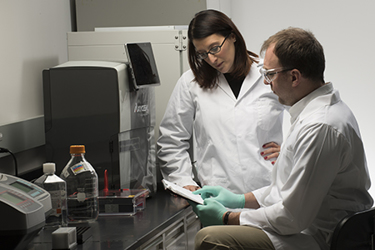CRISPR/Cas9-mediated PD-1 Knock-out In Human Primary T Cells Shows Enhanced Cytotoxicity Against Cancer Cells
By Yifan Zhang, Xuebin Wang, and Franziska Wienholz, Corning

The existence of an adaptive immune system in single-cell organisms was debated for a long time until the CRISPR/Cas9 mechanism had been identified1,2. In prokaryotes, invading DNA (i.e., from bacteriophages) is processed and inserted into a specific locus called Clusters of Regularly Interspaced Short Palindromic Repeats (CRISPR). From this locus, specific RNAs are transcribed which assemble into a complex with CRISPR-associated protein 9 (Cas9). Cas9 is an RNA-guided endonuclease that cleaves DNA which is complementary to the associated RNA3,4.
In this study, the CRISPR/Cas9 system was used to knock-out PD-1 gene expression in human primary T cells. The efficient lentiviral transduction of Cas9 nuclease and human PD-1 sgRNA in human primary T cells has been monitored. Cytotoxicity mediated by the engineered T cells was tested by co-culture with a leukemia cell line (K562 cells, PD-1L expressing). The results demonstrate that the CRISPR/Cas9 mediated knockout of PD-1 in primary T cells increases their cytotoxicity towards PD-L1 expressing cancer cells. This shows that in addition to clinical agents blocking PD-1 receptor signaling, genome-engineered T cells in which the PD-1 receptor is down-regulated or knocked-out can serve as a potent cell therapy.
Get unlimited access to:
Enter your credentials below to log in. Not yet a member of Cell & Gene? Subscribe today.
